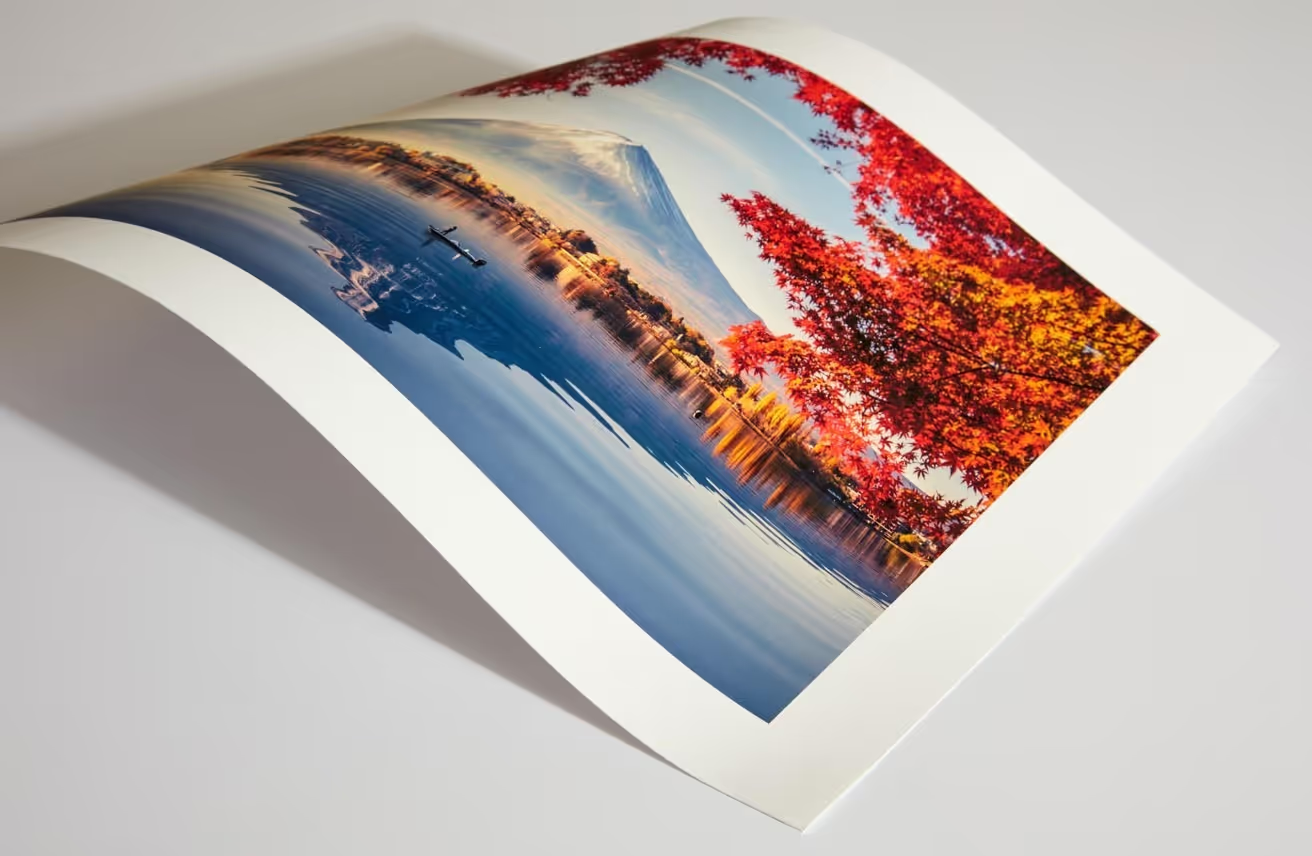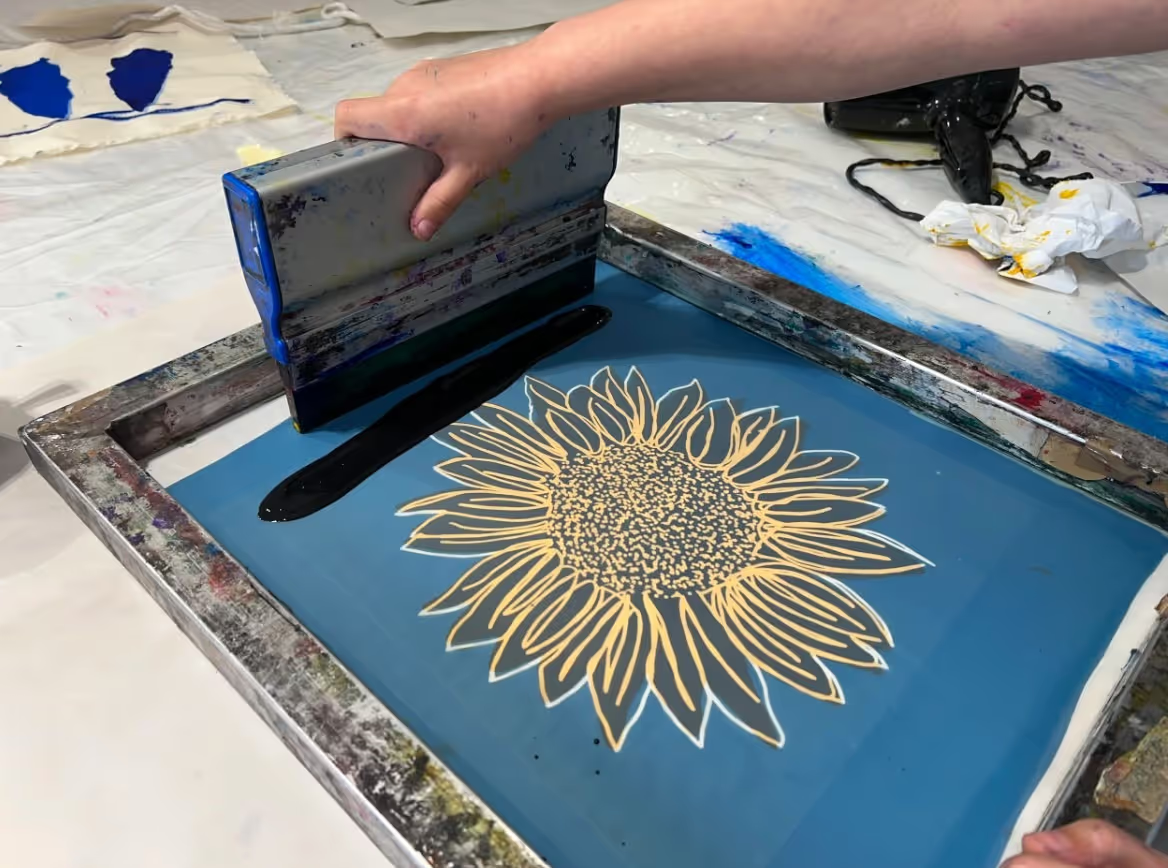With so many different types of art prints, choosing one for your art can be confusing. Each type has its own benefits and price range. Knowing your options helps you create high-quality visuals and attract more buyers.
Today, digital printing and print-on-demand sites make it easy for artists to sell their work. You don't need inventory or equipment. Just upload your digital art and start selling. Let’s look at the most common types of art prints and how to use them.
What Are Art Prints? Understanding the Basics
Art prints are high-quality copies of original artworks made through various printing methods. They let you share your art with more people while safekeeping the original.
Printmaking began with woodcuts and etchings, but modern technology now offers better colors and details. With print-on-demand services for artists, you can sell art worldwide from a digital file.
Original Artwork vs. Reproductions
An original artwork is a unique piece that the artist makes using paint, pencil, or another medium. A reproduction, or art print, is simply a copy.
Some prints are limited editions, meaning only a specific number is made. The artist signs and numbers them, making them more valuable. You can print open editions as many times as you want.
Artists also include a Certificate of Authenticity (COA) to show that a print is genuine. It increases the buyer’s trust and the print’s value, especially for collectors.
Print Editions Explained
Print editions describe how many copies of an artwork exist. Open editions can be reproduced indefinitely, and you don’t need physical inventory. Meanwhile, limited editions are numbered and finite.
Artist’s Proof is a special kind of print that comes first in an edition. It belongs to the artist, marked A/P, and numbered in Roman numerals. APs are rare and usually worth more.
Some artists may release unique copies, each with small differences in color or texture. The edition type affects both the artwork’s value and its appeal to buyers.
Modern Art Print Types (Print on Demand Focus)
Modern printing makes it easier to create and sell art. Here are the types of art prints available through POD services like Podbase.
1. Giclée Prints (Fine Art Prints)
Giclée prints (pronounced zhee-clay) use special inkjet printers and pigment-based inks that don’t fade easily. These types of art prints are made at a minimum of 1200 dpi (dots per inch). That’s what makes giclee prints sharp and colorful.
Printed on acid-free paper or canvas, giclées can last over 100 years and still look stunning. You can use them for fine art, detailed drawings, and photography.
Podbase offers giclée printing for those looking for a convenient way to get high-quality print-on-demand art.

Also Read:
- High Demand Products With Low Competition to Launch
- How to Increase Sales: Go From 100 to 1,000 Orders Fast
2. Canvas Prints
Canvas prints are made by printing digital art or photos onto canvas material. It’s stretched over a wooden frame, creating a ready-to-hang piece that looks like a real painting.
The image wraps around the edges, giving a gallery look. Canvas prints are light, durable, and don’t fade.
Their cost is mid to high range. They’re ideal for paintings, photos, or bold designs.
3. Metal Prints
A process called dye sublimation creates metal prints. Heat is used to press ink into coated aluminum sheets. This results in bright colors with a sharp contrast.
Among other types of art prints, the surface of metal prints is waterproof, scratch-resistant, and easy to clean. That’s why it’s ideal for busy places like offices, hallways, and cafés.

Metal prints have a sleek, glossy finish that fits photography and modern art. They’re lightweight, durable, and priced highly. With print-on-demand companies, you can create various finishes, including matte and glossy surfaces.
4. Acrylic Prints (Plexiglass)
Here, your image is printed on paper and mounted behind a clear acrylic surface. This gives it a shiny 3D look, making the image seem like it’s floating behind the surface.
Acrylic prints can resist sunlight, so they don’t fade over time. You can also mount them so they kind of float slightly off the wall. This style suits modern art, photography, and gallery exhibitions well.
Because they appear high-end, acrylic prints are among the most expensive types of art prints. They’re perfect for customers who want a polished, upscale finish.
5. Framed Prints
These types of art prints combine the artwork and frame into a single, ready-to-hang piece. Frames protect prints from dust and sunlight, which makes the piece last longer.
Choose from wood, metal, or colored frames. To add clarity and protection, choose glass or acrylic glazing. Framed prints are ideal for gifts, home décor, or traditional presentations.
The pricing depends on frame size and material. Podbase also offers customizable framing options with professional matting and finish choices for your print-on-demand art.
6. Digital Prints (Standard Photo Prints)
Digital prints are made on photo paper using dye-based inks. They’re great for quick orders, test prints, or casual art sales.

They look sharp but don’t last as long as other types of art prints, like giclée prints, especially when exposed to direct sunlight. However, they don’t cost much, making them perfect for high-volume sales or art markets.
You can use digital prints when testing new designs or offering low-cost reproductions.
Also Read:
- The Ultimate Art Print Size Guide [Standard Sizes]
- How to Sell Photography Prints Online (Step-by-Step Guide)
Traditional Art Print Types (Historical Context)
These old methods paved the way for modern art reproduction.
7. Lithography (Lithographs)
Lithography was invented in 1796 by Alois Senefelder. The artist draws directly on a smooth stone or metal plate using an oily substance.
The process relies on the repulsion of oil and water to transfer ink onto paper.
8. Screen Prints (Silkscreen/Serigraphy)
Screen printing dates back to ancient China. It uses a mesh screen and stencils to apply ink. Each color is hand-pulled through a separate screen, creating bright and layered designs.
The technique became famous through Pop Art, especially Andy Warhol’s work. Because each layer is applied manually, each print is unique.

9. Etching/Intaglio Prints
Etching involves carving designs into a metal plate using acid, creating fine lines and textures. As ink fills the etched grooves, a press transfers the image onto paper. This process results in exquisite detail and rich tones.
Artists like Rembrandt mastered this medium centuries ago. Original etchings are prized for their limited runs and handmade appeal.
10. C-Type (Chromogenic) Prints
C-Type prints are created using a photographic process on silver-halide paper. The image is exposed using light and developed through chemical baths. This technique produces smooth gradients and lifelike tones.
The art print offers excellent color accuracy and true photographic quality. As a result, compared to other types of art prints, C-Type prints are great for detailed images and high-end photo displays.
Other Traditional Methods
Other notable techniques include:
- Woodcuts
- Linocuts
- Risograph printing
- Letterpress
These hands-on processes continue to inspire artists who value texture, tradition, and long-lasting art.
How to Choose the Right Art Print Type for Your Work
Choosing the right print type depends on several factors, such as your art style, budget, audience, and display setting.
Consider Your Artwork Medium
Paintings work well on canvas or giclée paper, while photography suits metal, acrylic, or C-type prints. Digital art and illustrations look best as giclée or acrylic prints. However, abstract designs are better on canvas or metal surfaces.
Think About Your Budget
You can offer digital prints to customers on a low budget. Canvas or framed prints will suit mid-range budgets. Then, reserve metal, acrylic, and museum-quality giclée for premium prices. Digital print-on-demand platforms can help you manage expenses without keeping physical items.
Know Your Target Audience
Collectors value limited edition giclée or traditional prints, while decorators prefer canvas, metal, or acrylic. Consumers prefer framed or canvas pieces. Corporate clients and photography enthusiasts usually choose metal or C-type prints.
Match Print Type to Display Setting
Choose canvas or framed prints for home décor and metal or acrylic for commercial spaces. You can also use metal prints outdoors or in humid rooms. Galleries favor giclée because they show colors and details clearly.
Also Read:
- How to Price a Product (Without Losing Profit)
- How to Sell on Amazon Without Inventory (Step-by-Step)
How Podbase Simplifies Art Print Production
Podbase makes professional art printing simple and accessible for every artist. You can choose from giclée, canvas, framed, or metal prints, made with top-quality materials.
You don’t need equipment, as Podbase handles printing, packaging, and shipping. Each order meets strict color and quality checks for consistent results.
The platform connects with Etsy, Shopify, or personal websites. You’ll get file setup guides, pricing tips, and marketing templates to help you sell prints confidently.









